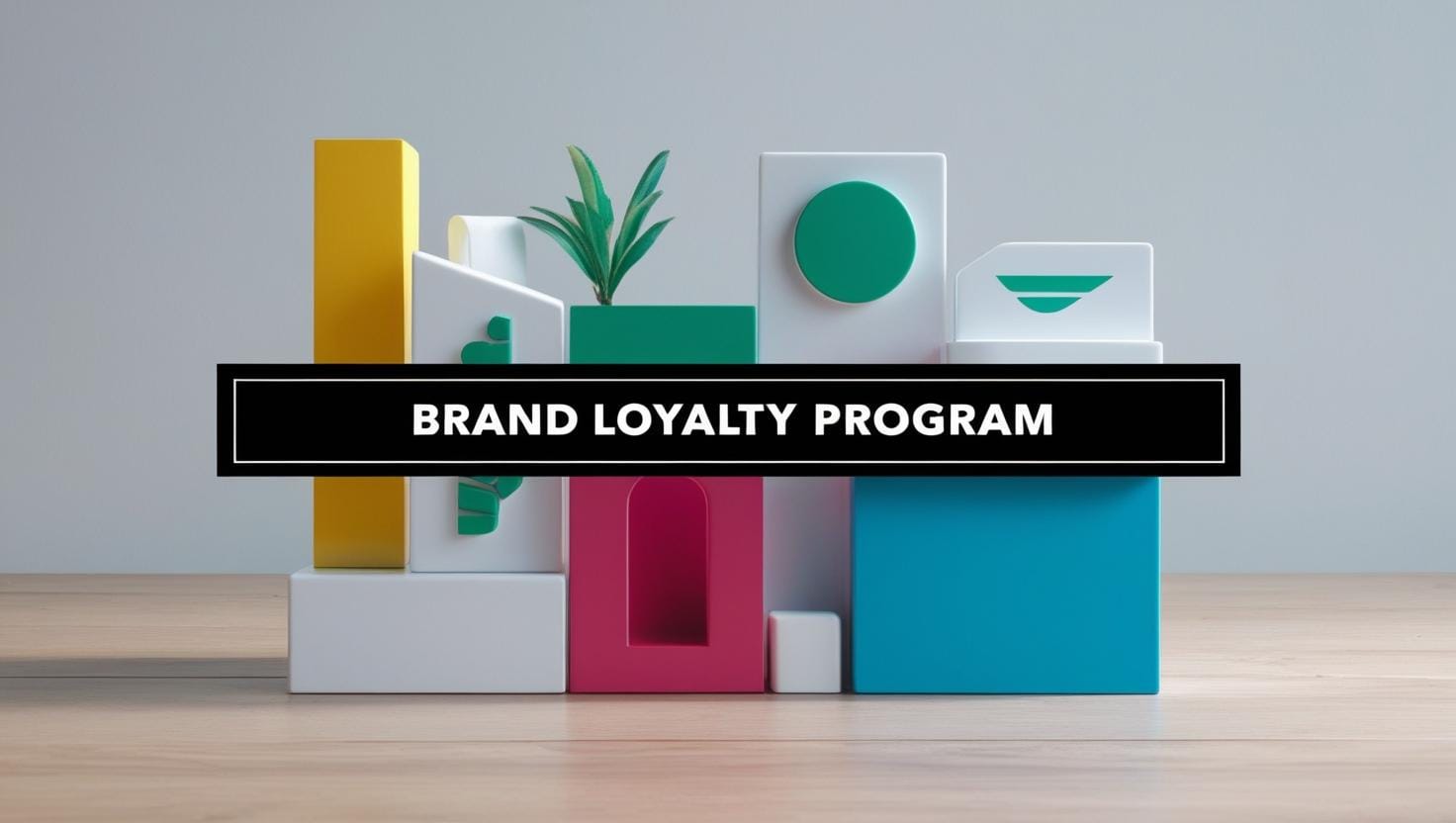On this page
Keeping customers engaged and loyal to your brand has never been more challenging. It becomes even tougher when you manage multiple brands for a conglomerate. This is where multi-brand loyalty programs come to the rescue.
Unlike standalone loyalty programs confined to one brand, multi-brand loyalty programs offer flexibility, allowing customers to earn and redeem rewards across various products and services within your house of brands. Such loyalty programs increase brand visibility and drive cross-selling opportunities.
However, managing one loyalty program itself is hard, let alone putting together one loyalty program for multiple brands. Or is it?
In this article, let’s find out what multi-brand loyalty programs entail, how they differ from coalition loyalty programs, their key features, and how having a unified platform such as Loyalife can help you run a multi-loyalty program at scale.
What Is A Multi-Brand Loyalty Program?
A multi-brand loyalty program is a customer loyalty strategy initiative combining two or more brands (usually with multiple brands under a parent company or as part of a strategic partnership) into a single, unified rewards system.
Under a multi-brand loyalty program, members earn and redeem points across multiple participating brands and use those rewards interchangeably.
Big conglomerates like Marriott Hotels have multiple customer-facing brands under their loyalty program, Marriott Bonvoy. Multi-brand loyalty programs are best suited for partnership ecosystems where businesses complement each other or have numerous brands under a single conglomerate, like air travel + hotel booking and fuel + shopping.
A multi-brand loyalty program provides more ways for customers to earn and use rewards, enhancing brand engagement. The loyalty program also offers business cross-promotion opportunities, increasing customer retention across the brand group.
Benefits of a Multi-Brand Loyalty Program
Multi-brand loyalty programs benefit both customers and businesses in the following ways:
Enhanced customer profiles
All the participating brands of any multi-brand loyalty program collect valuable customer data, such as demographics, purchase history, and preferences.
This data provides insights into cross-vertical shopping behaviors, enabling businesses to create detailed customer profiles for targeted marketing and personalized offers.
Improved customer engagement
Multi-brand loyalty programs encourage frequent interaction with all the brands within the loyalty ecosystem, increasing overall engagement and loyalty.
Customers feel motivated to participate more actively due to the broader range of brand rewards and redemption options.
Even better customer experience
Multi-brand loyalty programs boost customer-perceived value by offering more options and better rewards.
By providing personalized recommendations, discounts, and exclusive rewards based on shared data across brands, multi-brand programs deliver tailored experiences to fulfill the requirements of a diverse set of customers.
The unified system ensures seamless earning and redemption processes, making the program more appealing and user-friendly.
This leads to higher customer loyalty and satisfaction, encouraging customers to stay within the program’s ecosystem and choose the associated brands over competitors.
Competitive advantage
Multi-brand loyalty programs offer businesses a competitive edge by offering customers greater value, flexibility, and convenience than traditional single-brand programs.
Studies show that consumers increasingly prefer programs that earn and redeem points across multiple brands.
Cross-selling opportunities
Earning and redeeming points across multiple brands provides customers unparalleled flexibility, greatly enhancing their overall experience.
For conglomerates, this cross-brand interaction increases the likelihood of cross-selling, upselling opportunities, and even cross-promoting to drive overall revenue and deepen customer relationships across the brand spectrum.
Brands leverage shared customer data to promote complementary products or services from other participating brands, driving cross-sales and upselling opportunities.
Increased revenue and share of wallet
Multi-brand loyalty programs leverage the preference of their members to develop a highly effective cross-marketing strategy. These programs encourage customers to shop within the brand ecosystem and retain spending within the network, boosting overall revenue for participating brands.
They also balance purchase cycles across verticals, ensuring consistent revenue flow despite varying buying patterns in different industries.
The parent company drives revenue by expanding brand reach across several verticals.
Gap's One Membership, Four Brands program helps boost revenue by allowing customers to earn and redeem rewards across Gap, Banana Republic, Old Navy, and Athleta.
By integrating these brands into one unified loyalty system, shoppers spend within its ecosystem rather than seeking alternatives.
The strategy not only boosts cross-brand engagement but also ensures that customer spending remains within the company’s network, increasing the share of wallet.
Difference Between Multi-Brand Loyalty Programs and Coalition Loyalty Programs
A parent company manages multi-brand programs, while coalition programs require coordination among independent entities.
Both programs allow customers to earn and redeem points across multiple brands. The table details how multi-brand programs differ from coalition loyalty programs.
Table: Multi-Brand Loyalty Program vs Coalition Loyalty Program
Real Examples of Multi-Brand Loyalty Programs
The examples below illustrate how multi-brand loyalty programs can enhance customer engagement and loyalty across a network of brands.
Marriott Bonvoy
The Marriott Bonvoy hotel loyalty program covers over 30 hotel brands under the Marriott International chain, such as Ritz-Carlton, Sheraton, Courtyard, W Hotels, St. Regis, etc.
Members earn and redeem points across these brands, making it a multi-brand loyalty program under a single corporate umbrella. The loyalty program has tiered rewards based on stay frequency and has a unified mobile app and account across all hotel brands.
As customers make regular purchases, the traveler's loyalty grows from budget to luxury as their life stage evolves.
Hilton Honors
Similar to Marriott Bonvoy, Hilton Honors is a loyalty program that spans multiple Hilton brands, such as Hilton Hotels & Resorts, Waldorf Astoria, and Hampton by Hilton.
The Hilton Honors membership has over 6,500 properties across 18 brands in 119 countries and territories.
It offers rewards and benefits such as late check-out and discounted prices across these brands, which Hilton Worldwide manages.
Want to know more about hotel loyalty programs? Here is our detailed guide.
Tata Neu
Tata Neu is a multi-brand loyalty program run by Tata Group that allows customers to earn and redeem rewards across various Tata brands, including Taj Hotels, Croma, BigBasket, Tata Play, Westside, Cult Fit, Tata 1 Mg, and Qmin.
Tata Neu integrates multiple services into one app, providing a unified platform for managing loyalty points and accessing diverse products and services.
The points are redeemable across the Tata Group’s lifestyle, fitness, grocery, travel, electronics, and fashion brands. Their super-app has deep cross-brand integration and awards NeuCoins with the purchases.
Flying Blue (Air France–KLM Group + Partners)
Flying Blue is the loyalty program for Air France, KLM, and their subsidiaries like Transavia, Kenya Airways, TAROM, and Aircalin.
The members earn and redeem miles across these airlines, making it a unified program spanning multiple brands. The points earned are redeemable for flights, upgrades, and extras across the alliance. It acts as a seamless travel ecosystem under one loyalty currency.
Reliance One
Reliance One is a multi-brand loyalty program offered by Reliance Retail that integrates rewards across Reliance's extensive network of retail stores and partner brands.
Customers sign up for the program through Reliance Retail stores or the official website/app. Members receive a Reliance One loyalty card, which tracks purchases and accumulates reward points usable across Reliance's retail ecosystem.
Members earn points for shopping at Reliance Retail outlets, including Reliance Fresh, Reliance Trends, and other subsidiaries.
Core Features of Multi-Brand Loyalty Programs
Multi-brand loyalty programs allow customers to engage with multiple brands under a single umbrella; hence, loyalty systems must be tightly integrated.
An effective multi-brand loyalty program offers the following key features:
Shared customer data pooling
Since multiple brands are involved in the loyalty program, each collects and analyzes customer data across digital and physical touchpoints, helping create detailed customer profiles.
Shared customer data helps offer highly personalized recommendations, communication, and tailored offers.
Cross-brand flexibility
Multi-brand loyalty programs offer complete flexibility to members to earn and redeem rewards across all the brands within the program.
This cross-brand interaction also increases cross-sell and upsell opportunities for the brands participating in the loyalty program to drive revenue while deepening customer relationships.
To offer cross-brand flexibility, an interoperable infrastructure is crucial for different brand systems to work together and maintain the unique brand identity.
Tiered membership structure
Most successful multi-brand programs implement a tier-based system that rewards higher levels of engagement and spending with different participating brands.
The higher the tier, the better the rewards for the member. This approach helps in balancing the accessibility of the loyalty program with exclusivity.
Omnichannel capability
For a multi-brand loyalty program to be successful, it should deliver a frictionless experience across every customer touchpoint, digital or physical. Reliance’s ROne points are a great example of the omnichannel experience.
It allows you to earn and redeem ROne points across any of their physical brand outlets or digital stores, such as JioMart. This omnichannel experience helps drive program adoption among members.
Centralized rewards system
To manage a multi-brand loyalty program, a unified platform such as Loyalife helps manage rewards across all participating brands. It allows customers to earn and burn points throughout the entire house of brands.
This creates a consistent and smooth customer experience and keeps them engaged with the family of brands they trust.
Consolidated reporting and analytics
Multi-brand loyalty programs gather insights from all participating brands, and a unified platform (read Loyalife) is needed to track performance metrics and customer engagement patterns to optimize their strategy.
Consolidated reporting also helps the brand understand trends across their brands and customer journeys and build personalized campaigns at scale.
How Loyalife Will Help You Build a Multi-Brand Loyalty Program
Multi-brand loyalty programs are becoming a strategic must-have for brands with multiple companies under their umbrella to expand engagement, encourage cross-selling, and boost lifetime value. A well-designed multi-brand loyalty program unifies experiences, retains customers longer, and creates a powerful network effect.
The key to success lies in the technology behind the program
Loyalife is built to help brands easily design, manage, and scale multi-brand loyalty programs. Our AI-powered solution will provide the infrastructure to bring your ecosystem together. Here’s why Loyalife is an ideal choice for managing multi-brand programs:
Cross-brand earning and redemption
Loyalife enables customers to earn and redeem points seamlessly across all participating brands, creating a unified experience while driving stickiness within the brand network.
Centralized analytics and insights
Access consolidated reporting across all brands to track engagement, redemption patterns, and customer journeys. Turn insights into action with built-in performance dashboards.
Shared customer data pooling
Build 360-degree customer profiles by combining data from all participating brands, helping you to be more innovative with personalization, targeting, and campaign segmentation.
Tiered loyalty structures
Reward customers based on cross-brand activity and engagement with customizable tiered systems that drive increasing spending and status-based benefits.
Omnichannel engagement
From mobile to in-store, Loyalife ensures consistent touchpoints across digital and physical channels for a smooth customer journey—no matter where they interact.
API-first, easy integrations
Connect Loyalife with your existing CRM CRMs, ERPs, and POS systems across brands to minimize operational friction and maximize scalability.
Ready to Build a Winning Multi-Brand Loyalty Program? Book a free demo with Loyalife today.


